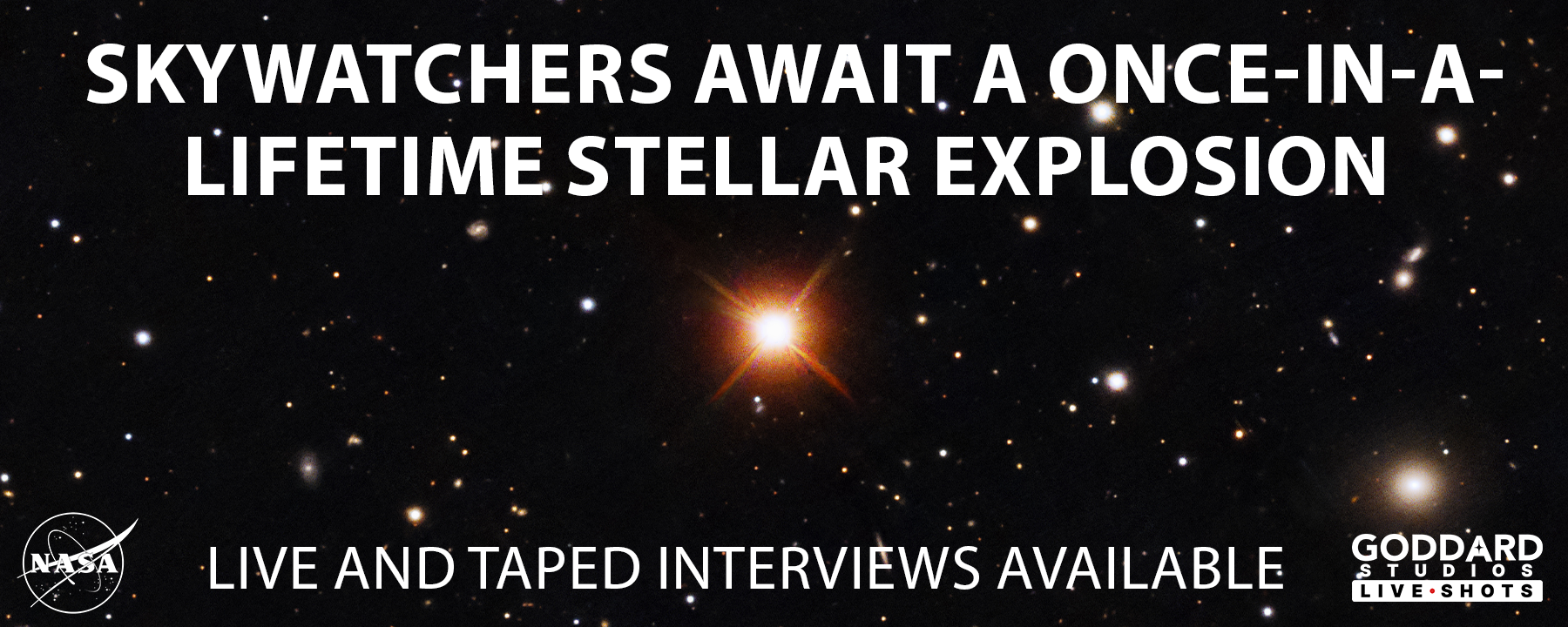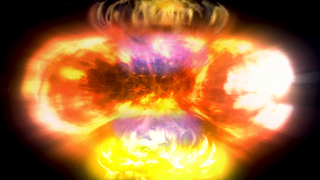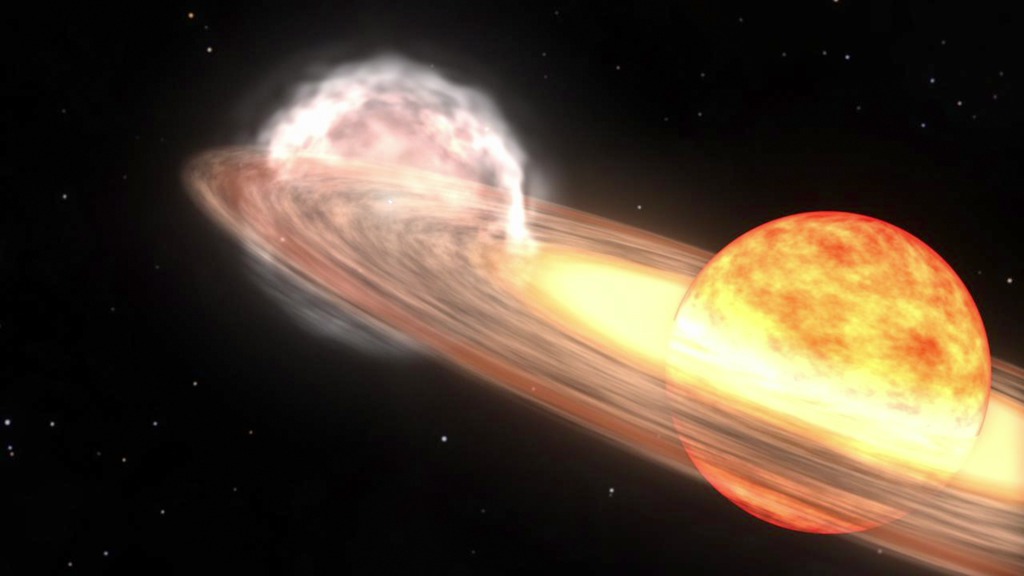T Coronae Borealis Nova Animations
Located 3,000 light-years away, T Coronae Borealis — T CrB for short — contains two stars that orbit each other: a red giant nearing the end of its life and an Earth-sized stellar remnant known as a white dwarf. The dwarf’s intense gravity rounds up some of the gas flowing off of the red giant, forming a flattened cloud of gas around the dwarf — an accretion disk. Gas in the disk gradually works its way inward, eventually flowing onto the white dwarf nestled at its center.
Credit: NASA's Goddard Space Flight Center Conceptual Image Lab
Alt text: Animation showing the T CrB system
Roughly every 80 years, one of the two stars in a star system known as T Coronae Borealis — or T CrB for short — experiences a violent eruption, causing it to brighten so much that the system briefly becomes visible from Earth with the unaided eye.
The system is composed of two stars that orbit each other: a red giant — a star nearing the end of its life — and an Earth-sized stellar remnant known as a white dwarf. White dwarfs are some of the densest objects in the universe, packing half the mass of our Sun or more into a planet-sized ball. Billions of years from now, our own Sun will transform first into a red giant and then into a white dwarf.
In T CrB, the white dwarf’s gravity rounds up some of the gas flowing off the red giant, forming a flattened cloud of gas around the dwarf. This gas gradually works its way onto the dwarf’s surface, building up a layer of material. Over decades, the pressures and temperatures of this layer increase and eventually reach a critical point. It explodes in a runaway thermonuclear reaction, an event called a nova. The explosion only affects surface material, leaving the dwarf intact, so the whole process can occur again and again.
In most cases, the process takes many thousands of years to repeat, so each system is seen as a nova only once. T CrB manages to do so every 80 years or so, which is why astronomers classify it as a recurrent nova.
Documented outbursts occurred in 1946, 1866, and 1787, with an even earlier eruption likely recorded in 1217. Based on recent behavior, some astronomers predicted the star would erupt sometime in late 2024. This system interests scientists because nova eruptions are relatively rare in our stellar neighborhood, and its proximity will allow them to glimpse the event in unusual detail.
After decades of steadily raining onto the white dwarf, a layer of gas has accumulated on the surface. At the base of this layer, where the pressure and temperature is highest, the gas reaches a critical point and begins to undergo hydrogen fusion — the process that produces energy in the centers of stars like our Sun. Once started, the reaction runs away across the dwarf, resulting in a thermonuclear blast on a scale the size of Earth. For a few days, this eruption brightens the system so much that it becomes visible from Earth with the unaided eye.
Credit: NASA's Goddard Space Flight Center Conceptual Image Lab
Alt text: Animation showing T CrB erupt
The explosion ejects surface material on the white dwarf, blasting out a shell of material that expands rapidly. Of great interest to astronomers is how the blast wave interacts with gas throughout the system and what this interaction will produce, such as high-energy emission like X-rays and gamma rays and possibly energetic particles called cosmic rays. Despite the powerful explosion, the dwarf itself remains intact, and once things settle down, T CrB will begin the decades-long preparation for a future cosmic fireworks show.
Credit: NASA's Goddard Space Flight Center Conceptual Image Lab
Alt text: Animation showing T CrB blast wave
For More Information
See the following sources:
Credits
Please give credit for this item to:
NASA's Goddard Space Flight Center Conceptual Image Lab
-
Animator
- Adriana Manrique Gutierrez (eMITS)
-
Technical support
- Aaron E. Lepsch (ADNET Systems, Inc.)
-
Producers
- Sophia Roberts (Advocates in Manpower Management, Inc.)
- Scott Wiessinger (eMITS)
-
Scientist
- Koji Mukai (UMBC)
-
Science writer
- Francis Reddy (University of Maryland College Park)
Release date
This page was originally published on Monday, November 4, 2024.
This page was last updated on Friday, October 25, 2024 at 1:54 PM EDT.



